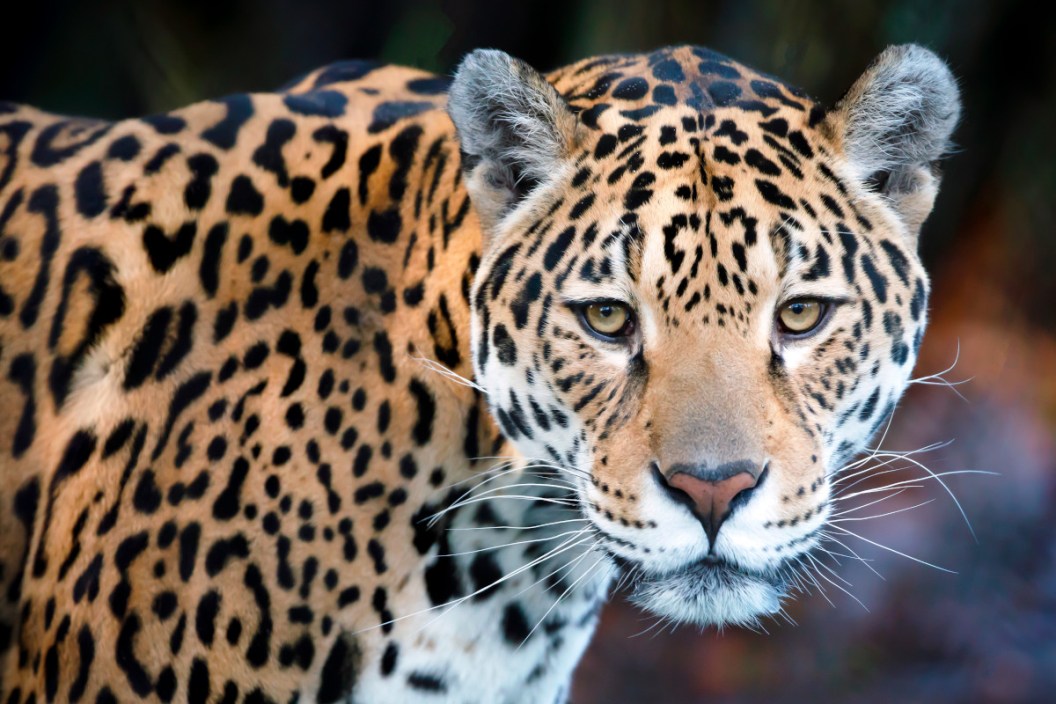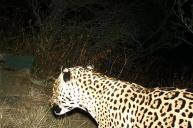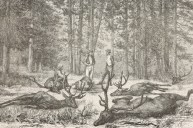Other than mountain lions, the only real way we get a chance to stare into the eyes of the big cat species here in the United States is by visiting a local zoo. But it wasn't always that way, and it could still change in future. If you told your friends that you spotted a free-roaming jaguar on a trip out west to Arizona or New Mexico, they'd probably call you crazy. However, that's exactly what happened to two farmers in the early '90s.
Since then, there have been random reports of big cats matching the description of jaguars all throughout the American Southwest. While most have been brushed off as rumors, others have been confirmed as being very real. It has biologists wondering if jaguars will make a return to their native range in the United States.
History of the American Jaguar
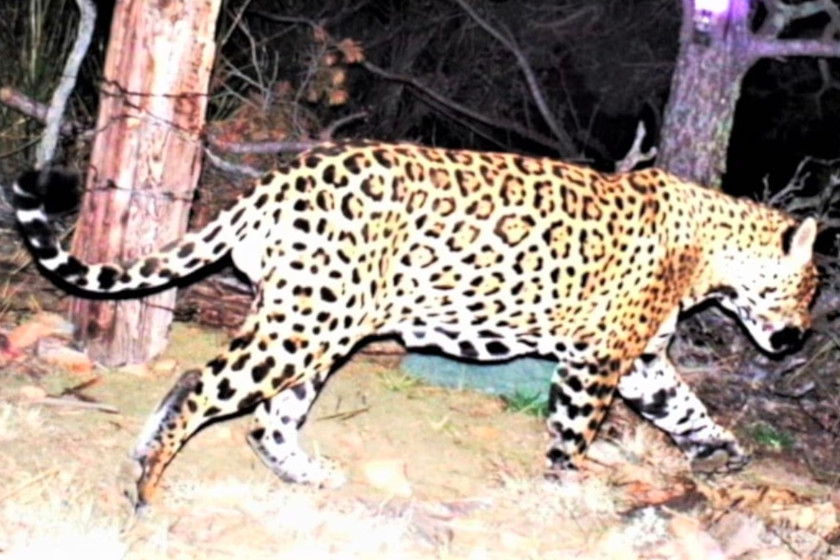
A photo of a jaguar captured by a Bureau of Land Management trail camera. Photo by Bureau of Land Management
While a bit of shrouded mystery surrounds the random reports of jaguar sightings in the lower 48 states, what we do know is that there was at one time a healthy jaguar population in New Mexico, Arizona, Texas, and even California. In Arizona, the last known breeding pair was documented in the 1960s. Pressure from settlers and overhunting are the primary factors attributed to pushing the predators out of their home ranges. Most were absent from the American Southwest by the mid-1800s, although there were a few holdouts that stayed in more remote areas such as Arizona and New Mexico.
It's likely that these big cats preyed on mammals such as the pronghorn antelope, desert sheep, mule deer and possibly even whitetail deer. Their exact population isn't documented, but studies have shown that numbers were likely healthy at one point with adequate habitat before developments such as forestry, mining and even residential grounds were established.
Thanks to the advancement of trail camera technology, the Arizona Game & Fish Department has confirmed multiple sightings in the state. In January 2017, the AGFD announced it had over 150 photos and six videos of a male jaguar in the Cabezas/Chiricahua Mountains. It was believed that the animal wandered in from Mexico looking for a mate. This animal, later named "El Jefe," eventually returned to Mexico. He was captured on camera in August 2022 more than 100 miles south of the border.
Another jaguar was confirmed in trail camera photos on the U.S. Army installation Fort Huachuca in the Huachuca Mountains in November 2017. A third was recorded on camera in the Dos Cabezas mountains around the same time.
Talks of Reintroduction
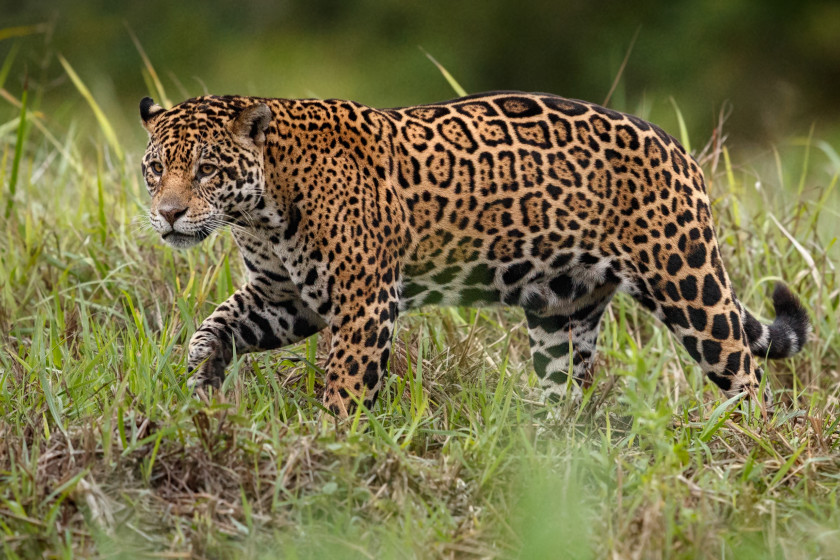
Photocech via: Getty Images
The idea of the reintroduction of the American jaguar seemed to really blow up in the past few months when it was mentioned by MeatEater's Steven Rinella on Joe Rogan's podcast. Rinella talked briefly about what such an introduction might look like and his level of support on the matter. The conversation on that topic essentially ended there, but it succeeded in putting the jaguar onto everyone's radar. For many environmental and animal groups, the conversation is only getting started.
In December 2022, the Center for Biological Diversity started a petition in hopes of convincing the U.S. Fish and Wildlife Service to reintroduce the big cat to its original native area of the Southwestern United States—more specifically, the Gila National Forest in New Mexico. The idea behind this would be to reserve specific areas of that national park that contain ideal habitat conditions for the jaguar, totaling nearly 14 million acres between New Mexico and Arizona.
This national park has a very diverse animal population of whitetails, mule deer, and even wild hogs and javelinas. As far as habitat goes, research suggests there would be very little threat to the jaguar if reintroduced into the United States. However, there is a reason they got pushed out in the first place. Human development, specifically mining and forestry interests, don't exactly have the jaguar population in mind when determining business practices—which may be fair or not fair, I'm not here to judge that.
Will There Be a Jaguar Comeback Story?
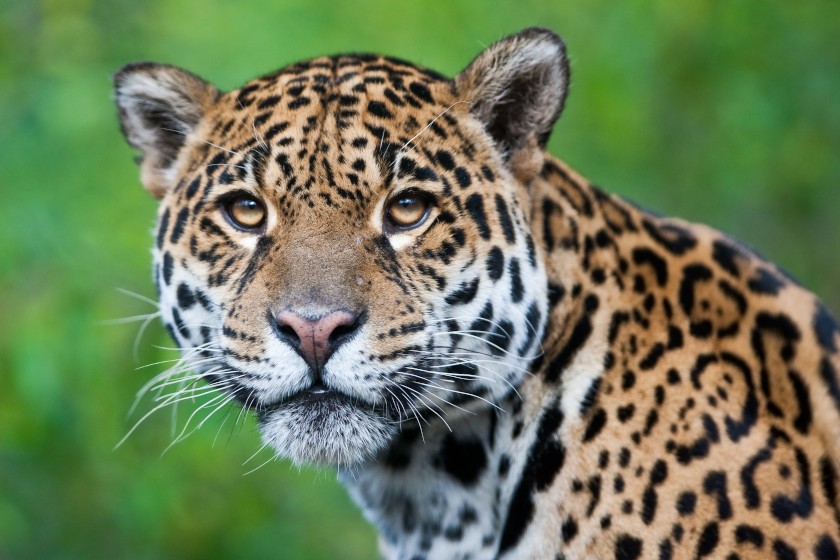
Palenque via: Getty Images
If the U.S. is going to support a healthy jaguar population, it has a long way to go. There is still no evidence of a breeding population within the states. And big male big cats are documented wanderers, so it's hard to say they are back based on a few trail camera photos. Additionally, this reintroduction proposal has only recently started to gain traction. Despite the Center for Biological Diversity's 2022 petition, the Department of the Interior hasn't made any public statements on it yet. Do I think the jaguar will have a successful comeback story? I think there's a good chance. Do I think it will happen in the next 10-15 years? I doubt it.
Ecosystem establishments—as well as foreign policies with Mexico to determine the best actions regarding migrating big cats—will be time-consuming and will likely face a lot of setbacks. However, the U.S. knows a thing or two about wildlife comeback stories — just take the North American turkey, for example.
I do hope to one day live in an America where we can coexist with such a beautiful animal. The concerns about the role they will play in a very industrial country are fair and understandable. However, even though I wasn't alive when they were roaming this country, there's a sense of energy around them that makes me want them to come home.
There is an interesting quote by famous conservationist Aldo Leopold about his trip to the Colorado River in search of the American jaguar. Leopold remarked, "We saw neither hide nor hair, but his personality pervaded the wilderness."
I agree with you, Aldo. I support the American jaguar!
